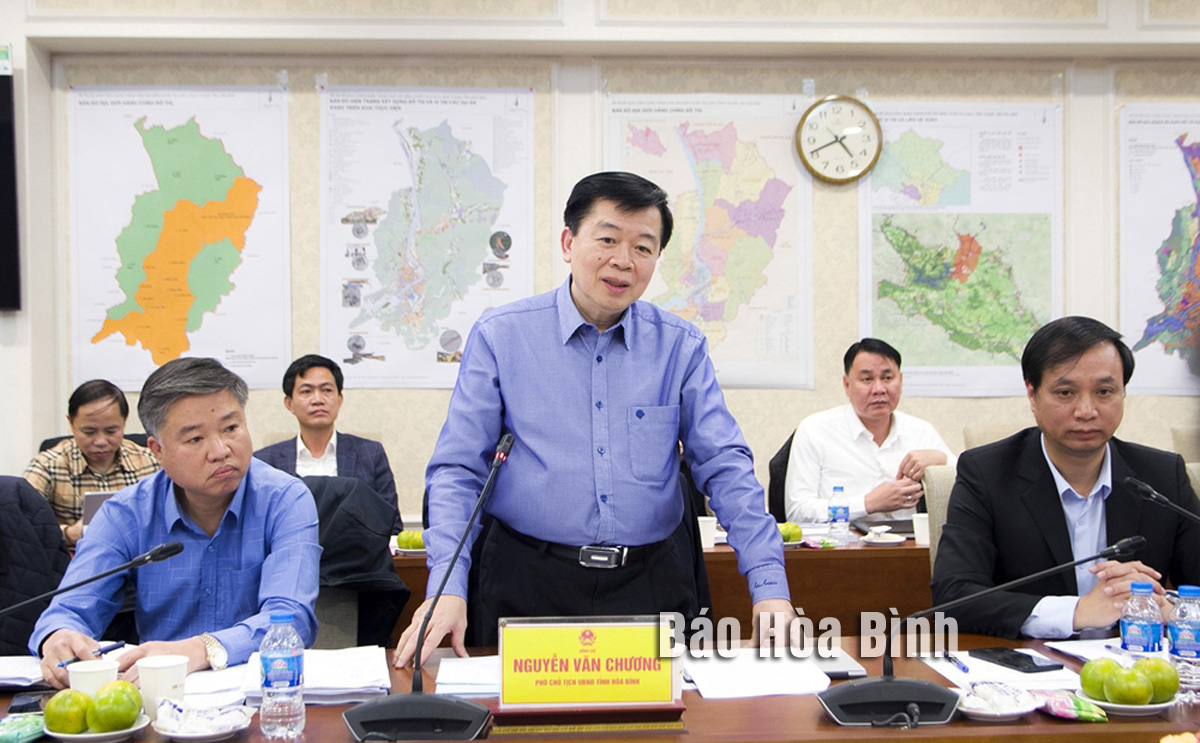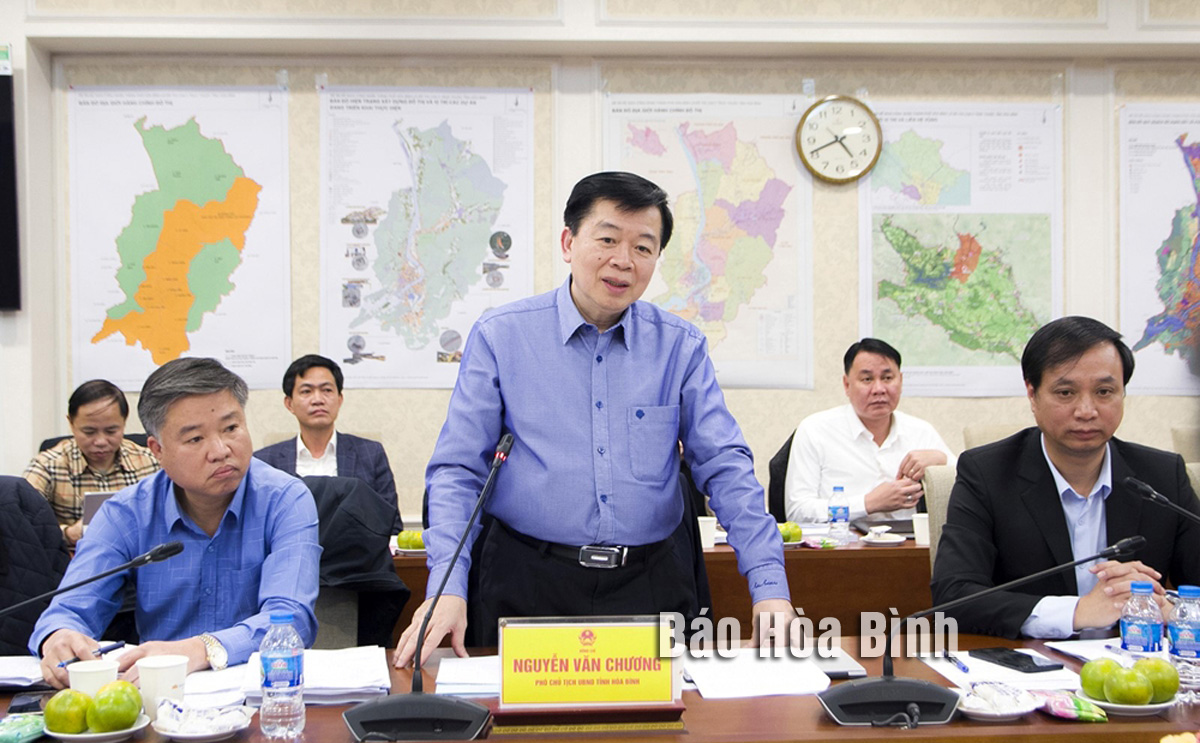
Deputy Minister of Construction Nguyen Viet Hung chaired a meeting in Hanoi on December 23 to assess a proposal on recognising Hoa Binh city as a tier-2 urban area under Hoa Binh province. Attending the event was Vice Chairman of the provincial People’s Committee Nguyen Van Chuong, Secretary of the Hoa Binh City Party Committee Nguyen Van Thang, as well as leaders from various departments and the Hoa Binh City People's Committee.
Vice Chairman of the provincial People’s
Committee Nguyen Van Chuong speaks at the event.
The proposal on upgrading Hoa Binh city from a
tier-3 to a tier-2 urban area by 2025 aligns with the National Urban
Classification Plan for 2021-2025, the 2021-2030 Urban and Rural System
Planning with a vision to 2050; and Hoa Binh province's master planning scheme
for the 2021-2030 period, approved by the Prime Minister. The scope of the
proposal covers the entire administrative area of Hoa Binh city, spanning
roughly 348.65 sq.km, including 19 administrative units at the communal level.
The inner city area consists of 12 existing wards and Mong Hoa commune which is
planned to become a ward.
Hoa Binh city's master planning scheme through
2045 envisions the city as the political, administrative,
socio-economic-cultural, and scientific-technical centre of Hao Binh province.
It will be one of the central urban areas in the Hanoi Capital region, an
ecological city rich in cultural and historical heritage, with an important national
defence and security position in the western part of the Capital Region. The
city will feature landscapes along the Da river and be connected to Hoa Binh
lake.
By the end of 2023, the population of Hoa Binh
city was estimated at 177,000, with around 83.6% living in urban areas. The
overall population density was some 1,004 people per sq.km. The city's average
economic growth rate over the past three years was 11.93%. The economic
structure has shifted positively, with an increasing proportion of industrial,
construction, and trade-service sectors, and a decreasing share of agriculture.
The rate of non-agricultural labour was 82.2%. The average monthly income per
capita was 1.5 times higher than the national average while the
multidimensional poverty rate decreased to 1.38%, and the rate of solid houses
was about 97.06%.
Atthe meeting, the appraisal board gave
the proposal a score of 84.16 out of 100 points. However, the board provided
suggestions for Hoa Binh city to improve certain criteria before submitting the
proposal to the Prime Minister for official recognition.
On behalf of the local administration, Chuong
acknowledged the board's feedback and committed to quickly directing relevant
departments to revise and complete the proposal.
According to data from the Hoa Binh Provincial Party Committee, the industrial production index for the first six months of 2025 is estimated to have increased by 20% compared to the same period last year. This marks the highest year-on-year growth rate for this period since 2020.
In the first six months of 2025, Hoa Binh province’s export turnover was estimated at 1.145 billion USD, marking an 18.11% increase compared to the same period in 2024. Import turnover was estimated at $ 804 million, a 17.15% increase, which helped the province maintain a positive trade balance.
The lives of the ethnic minority farmers in Tan Lac district have gradually improved thanks to the new directions in agricultural production. This is a testament to the collective strength fostered through the professional associations and groups implemented by various levels of the district’s Farmers’ Union.
With the motto the "product quality comes first,” after nearly one year of establishment and operation, Muong village’s Clean Food Agricultural and Commercial Cooperative, located in Cau Hamlet, Hung Son Commune (Kim Boi district), has launched reputable, high-quality agricultural products to the market that are well-received by consumers. The products such as Muong village’s pork sausage, salt-cured chicken, and salt-cured pork hocks have gradually carved out a place in the market and they are on the path to obtaining the OCOP certification.
In the past, the phrase "bumper harvest, rock-bottom prices" was a familiar refrain for Vietnamese farmers engaged in fragmented, small-scale agriculture. But today, a new spirit is emerging across rural areas of Hoa Binh province - one of collaboration, organisation, and collective economic models that provide a stable foundation for production.
Maintaining growing area codes and packing facility codes in accordance with regulations is a mandatory requirement for agricultural products to be eligible for export. Recently, the Department of Agriculture and Environment of Hoa Binh province has intensified technical supervision of designated farming areas and packing facilities to safeguard the "green passport" that enables its products to access international markets.



